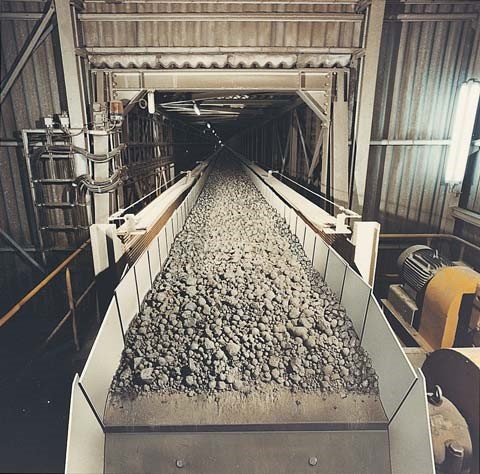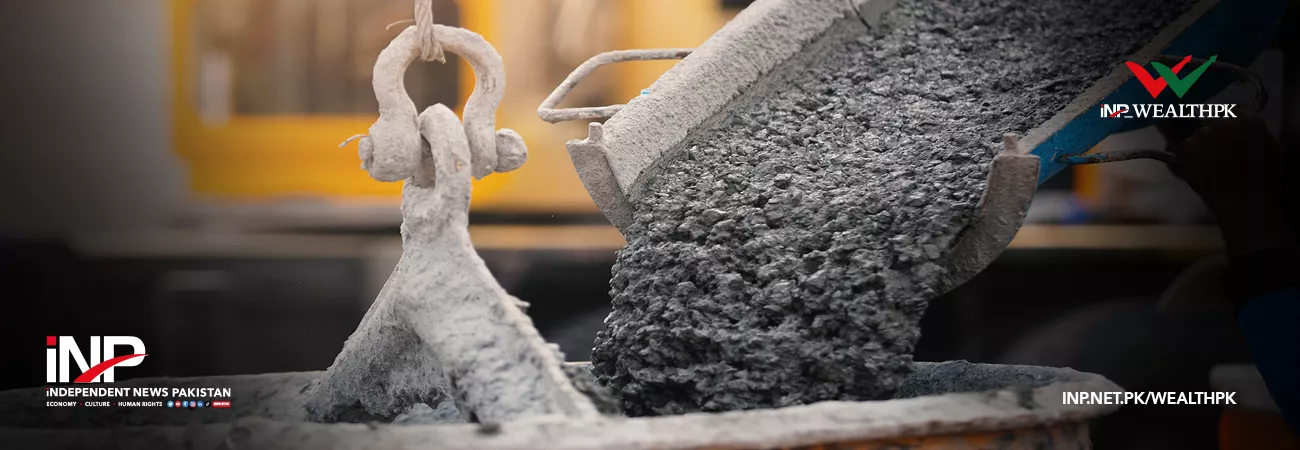INP-WealthPk
Arsalan Ali
Pakistan’s cement industry, despite being a significant contributor to the carbon footprint, has the potential to spearhead the effort to curb emissions and transition towards a low-carbon economy if it gets ample support and incentives from the government, experts said. Ubaidur Rehman Zia, Senior Research Economist at Sustainable Development Policy Institute (SDPI), said while talking to WealthPK that decarbonisation is crucial to achieving Sustainable Development Goal 7.

He said the industrial sector in Pakistan holds a significant responsibility in terms of carbon emissions, contributing a staggering 32% to the total 232 Mt CO2 emissions from the energy sector. He added that the manufacturing of construction materials, such as cement and bricks, exacerbates the problem, accounting for 50% of total emissions from the industrial sector.
The researcher mentioned that coal remains a major contributor (51.4%) to energy consumption in the industrial sector. He added that this trend has been on the rise, with the annual compound growth rate of coal consumption in the industry exceeding 20% since 2016. “The cement sector in Pakistan accounts for almost 36% of the coal used in the industrial sector,” he pointed out.
Ubaid further stated that according to the National Determined Contributions (NDCs) of Pakistan (climate action plan), the country has set a goal of limiting emissions by 50% by 2030, and added that there is a potential for a 9% reduction in emissions in the industrial sector. However, he said, the challenge remains to reach net-zero emissions by 2050, especially for the cement sector, which needs to reduce its emissions by 53% by 2030.
Saleha Qureshi, energy expert at the SDPI, told WealthPK that the industrial sector is a vital part of modern economies; however, it also contributes significantly to global emissions, with major industries like cement, concrete, iron and steel, oil and gas, chemicals, and mining collectively responsible for 80% of industrial emissions. She said that in Pakistan, these emissions make up 6.5% of the country's total CO2 emissions.
Saleha said that despite its crucial role in the economy, the low carbon transition in the cement sector in Pakistan faces challenges due to limited fiscal space and investment. However, she added that this presents an opportunity to address the emissions issue and drive the country towards a more sustainable and low-carbon future. “To achieve a decarbonised cement sector, a comprehensive approach is needed. Transformation towards a low-carbon future demands a socio-technical transition that involves several crucial elements,” she pointed out.
Saleha said a shift towards low-carbon fuels and energy efficiency improvements is necessary to reduce emissions from energy production. She said clinker substitution with alternative materials can also help in reducing emissions. She maintained that carbon capture storage and utilisation technologies can be adopted to mitigate the emissions from cement production. “But the transition doesn't end here,” Saleha said, adding that to validate the process and develop a roadmap towards a sustainable future, changes in regulatory policies, innovative practices, and coordination among stakeholders are also crucial.
Syed Fawad Hussain Shah, Senior Assistant Manager at the Centre for Industrial and Building Energy Audits, told WealthPK that the cement sector in Pakistan contributes to almost 45% of the energy emission and 55% of the process emission. He said despite these high numbers, thermal efficiency in the cement sector is found to be higher than the global average, with a measurement of 3.9 giga joules per ton of clinker compared to the global average of 3.4 to 3.5 giga joules per ton of clinker. He further said electrical efficiency in the cement sector falls short of the global average, measuring 90 kilowatts hour per ton of clinker, while the global average stands at 100 kilowatts hour per ton of clinker.
Fawad said this discrepancy can be attributed to a higher nominal clinker-to-cement ratio in Pakistan, a higher share of coal in the energy mix, and a low share of biomass and renewable energy. “The quest for a low-carbon future in the cement sector in Pakistan is not without challenges,” he said, adding that while there is potential for electrification and green hydrogen, these solutions are currently at low technology readiness levels. Farooq Ahmed, Head of the Environment at Bestway Cement Limited, said the cement industry can continue to innovate and reduce their carbon footprint if it gets support from the government and regulatory bodies.
Credit: Independent News Pakistan-WealthPk




